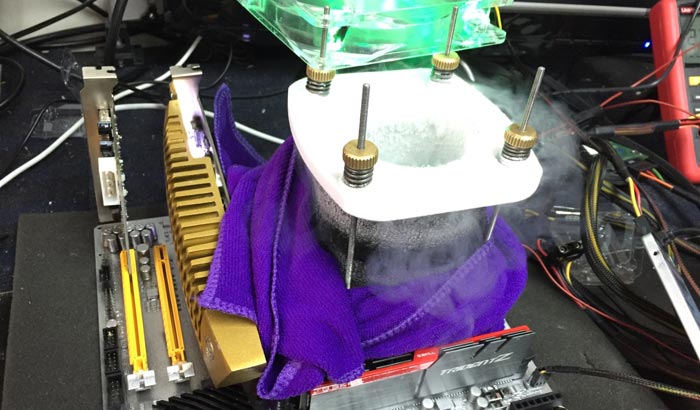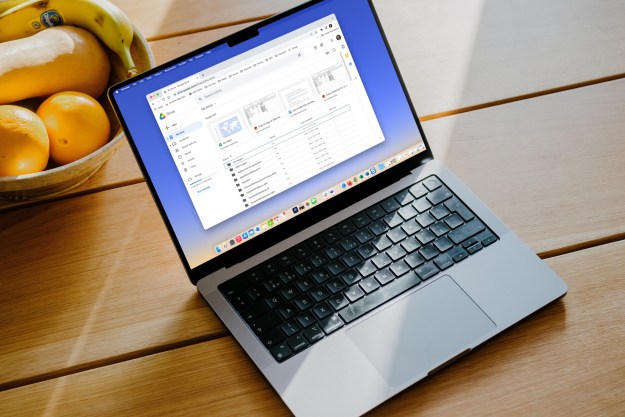
To accomplish this feat, the overclocker had to bootstrap a nitrogen cooling solution for their CPU, using its extremely low temperature (-321 degrees Fahrenheit to be exact) to draw heat away from a CPU pushing past 7.025 GHz on a single core.
As cool as this may look, it’s also very dangerous. Liquid nitrogen can cause frostbite if accidentally touched, and liquid nitrogen also causes water vapor in the air to condense, which can easily short circuit your very expensive computer into a very expensive brick. This is why the overclocker has a towel around the CPU and electronics to soak up any water droplets.
As amazing as this is to witness, it’s only a record among Skylake CPUs. An AMD CPU was overclocked to nearly 8.8 GHz several years ago, and someone even managed to get a $50 Intel CPU to reach a mind-bending 8.5 GHz clock speed in 2013.
All of this is for bragging rights, too. Most of these setups are not designed for long term usage at these high speeds, and are usually tested on just one core, rather than all the cores on a typical desktop CPU. Still, it’s crazy to see what a little elbow grease and some liquid nitrogen can achieve with just a processor off the shelf from your local electronics store.
Editors' Recommendations
- Intel thinks your next CPU needs an AI processor — here’s why
- Intel’s Rocket Lake chips have been successfully overclocked to 7GHz


